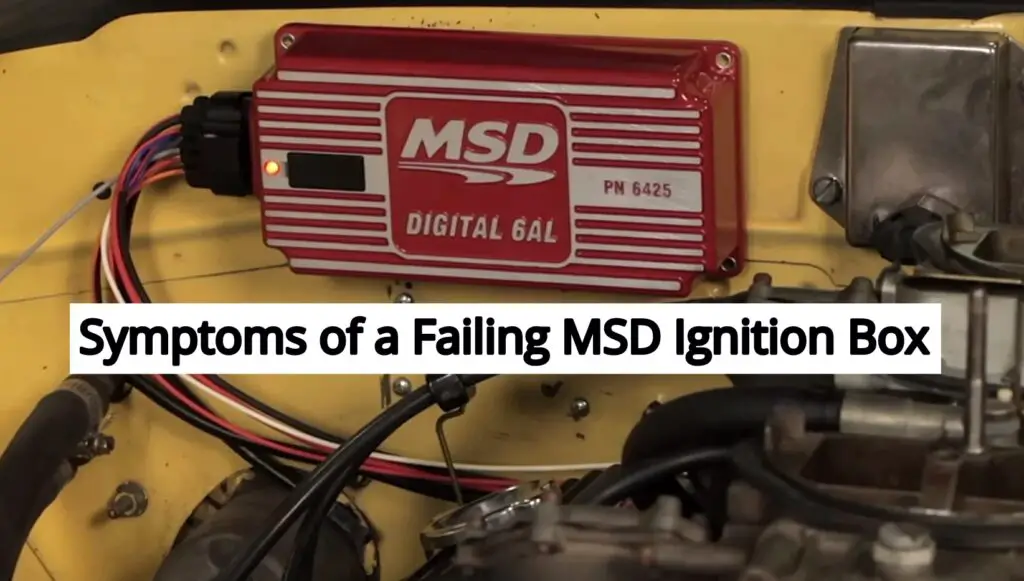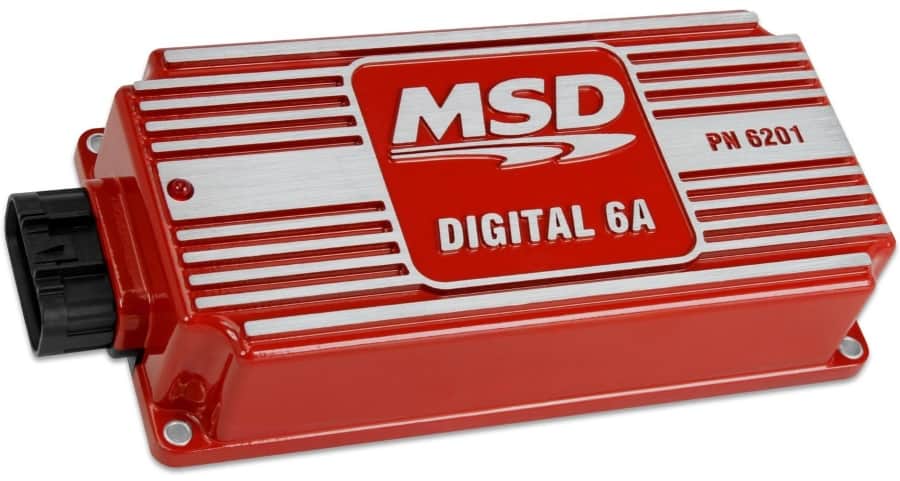
MSD ignition boxes are essential to provide extra force to your spark plug, igniting it in multiple short bursts.
This ignition helps your vehicle run faster and farther than its factory ignition counterparts (which only fire your spark plug once). What happens when they begin to fail, however?
If you have a failing MSD ignition box, you’ll notice that the vehicle will miss the spark or begin backfiring. You may also observe that the engine stalls repeatedly or begins to develop a foul odor.
Read on to discover all the symptoms you can expect to see when the MSD ignition box is failing.
1. The Box Misses the Spark
If your MSD ignition box fails, the primary cause is almost always down to a faulty internal connection between the box and other vehicle components. There’s also a chance the cause is a shunt fault in the internal network.
At this point, you might find it difficult to start your car. Initially, you’ll notice that it frequently starts and stops, a problem that will get worse over time if left unresolved.
Ideally, your ignition box should work in conjunction with the intake valve. Valve timing is essential to starting your car, and if there’s a disconnection between the two, the car won’t start.
This is primarily down to wiring issues. If there’s a disconnect, the timing between the two functions is off, and your ignition won’t spark.
The first thing you’ll see in this case is a car backfire. We’ll get into that later in the article.
2. Flickering Dashboard Lights
If your MSD ignition box is failing, you might observe the lights on your instrument panel malfunctioning. They might flash or fail to turn on at all. This will happen whether the car is idling or in motion.
However, this sign will be significantly more obvious when you are in motion. Normally when driving, any warning lights will stay on, and the rest of the lights will shut off. You won’t find this to be the case when the ignition box is failing.
This might also happen when your battery fails. For this reason, a failing ignition box is often confused with a failing battery. The best thing to do is first check the battery, which can be easily tested.
If your car battery is working fine, you’ll know at this point it’s a failed MSD box. These are the only two things that will typically cause the dashboard lights to flash.
3. There Is No Starter Sound
When the car turns over properly, you should hear the traditional noise that the car makes when starting and continuing to run.
Similar to when the starter is failing, you may notice that there is either silence or a clicking sound when the ignition box is failing.
You should be hearing some degree of noise coming from the vehicle when it has started properly. While some vehicles are quieter than others, complete silence is almost always an indication that the ignition box is failing.
4. The Ignition Key Isn’t Turning
This is a key indicator of a problem with the ignition box. Ideally, the ignition key should always turn, even if the vehicle isn’t making the turnover sound.
There is one other reason why the ignition key may not be turning immediately, and this isn’t due to a problem with the ignition box. Instead, it’s because the ignition lock isn’t engaged.
In this situation, you’ll need to check whether or not the ignition lock is engaged. The ignition lock must be engaged for the ignition key to turn.
Give your steering wheel a full turn clockwise and counterclockwise (or vice versa). You can then try your ignition key again.
If the ignition key turns at this point, you’ll know the problem is the ignition lock. If it doesn’t, then the problem is definitely with your ignition box.
5. The Engine Won’t Start
Like some of the others on our list, this issue can easily be confused with a battery problem. However, it’s more commonly related to a problem with the ignition box.
The ignition box may cause the engine not to start at all, or it may take a long time to start. It may also run very poorly once it starts. You should look for signs such as:
- An ignition that cranks but doesn’t start.
- An ignition that cranks multiple times before starting.
The best thing to do in this situation is to have your battery tested. Any automotive shop can easily perform the battery test, or it can be done at home using a multimeter.
This is the quickest way to determine whether the issue lies with your battery or the ignition box.
6. The Engine Stalls
When the ignition box is just beginning to fail, you may notice that the vehicle is starting, but it won’t run for very long.
Instead, you’ll find that the engine sporadically stalls while driving. This will happen more and more frequently as time goes on until, eventually, the vehicle won’t start at all.
If your engine has begun to sputter and then stall, most likely, it’s due to an issue with your ignition box.
The ignition box affects so many parts of the vehicle that it almost seems too obvious to affect the engine in this way. You may at first assume that it’s a problem with another part of the engine.
Still, this remains one of the most common signs that something is wrong with your ignition box.
7. The Engine Smells Bad
Did you know that the ignition box also affects how the engine smells? When the ignition box begins to fail, it can produce a strong burning smell from the engine compartment.
This smell comes hand in hand with engine stalling. If you smell a burning smell, but the engine is not stalling, most likely, the problem is not with the ignition box. It’s more likely to be an issue with overheating or something similar.
What You Can Do About a Failing MSD Ignition Box

Now that you know the symptoms of a failing ignition box let’s talk about some of the steps that you can take to fully diagnose the problem and repair any issues.
If you believe that your ignition box could be failing, there are a few simple tests that you can perform. The first is sometimes known as the white wire trigger exam.
Here’s what you’ll need to do.
- Turn off the ignition.
- Withdraw the spark coil from the ignition cap.
- Ensure the box so it sits just above the ground, ideally about an inch.
- Remove the wire and switch your ignition on again.
Once you reconnect the ignition, you’ll want to make sure the wire is functioning correctly. It should emit a spark when touched.
In addition to the white wire examination, you’ll also need to ensure all the other components are functioning properly. If some of the wires aren’t doing their job, you can replace them.
One of the most important components is the coil, so you’ll need to replace this if you observe any issues. If any of the wires have disconnected, you can be sure your MSD ignition box is the problem.
The final exam involves looking at the magnetic pickup trigger using a booster cable.
Follow the steps below to test it:
- Turn off your ignition.
- Take the booster cable to short circuit the wires – look for green and purple magnetic pickup wires.
- If you see a spark, your ignition is working properly. If not, then you’ll know it’s your MSD box.
Most of these processes try to find a spark within the ignition box. If, after multiple tests, you cannot get the ignition box to produce a spark, then it may be necessary to replace your MSD ignition box.
Let’s talk about what this looks like.
Replacing the MSD Ignition Box
Ignition boxes all have to be replaced at some point. If you’ve recently reached this point, don’t worry; it’s not too difficult or expensive!
Replacing your ignition box will cost under $100. This includes the repairs and the cost of the ignition box. You can bring this price even lower if you do the repairs yourself.
You shouldn’t have to replace the ignition box frequently. You simply need to keep up with maintenance to keep the box running properly.
A regular checkup should ensure that the entire unit is working efficiently, but you should be able to cover thousands of miles without a replacement.
The best way to replace your MSD ignition box is by taking your car to a mechanic. It’s a fairly easy process for someone who is experienced in the field, but it can present challenges when you aren’t familiar with what to do.
If you do need to replace the ignition box, make sure that you test out the new box before taking your vehicle back home.
